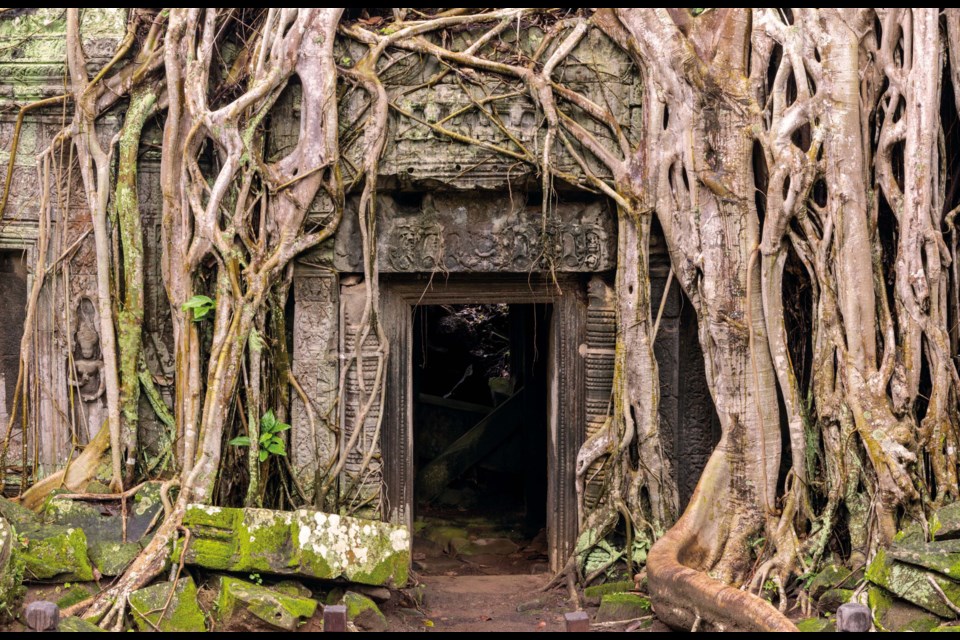Angkor: The Lost Empire of Cambodia arrived at Royal Alberta Museum in Edmonton on Feb. 23 to excited crowds waiting to see the first major exhibit since COVID.
This magnificent exhibit features one of the greatest empires throughout South Asian history, and ushers visitors to the classical era of Cambodian (Khmer) history.
The main gallery takes visitors through the rise and decline of ancient Angkor with 120 artifacts, sculptures, stone statues, god figurines, ritual objects, musical instruments, and personal items. Some are original. Others are replicas.
“The overall experience of this exhibition is truly spectacular, capturing the magnitude and beauty of Angkor alongside the rich history and artifacts of the Khmer people. Angkor: The Lost Empire of Cambodia shares the art and artifacts of the Khmer kings and their people as well as the modern science and research that have helped us decipher this awe-inspiring empire,” said RAM executive director Meaghan Patterson.
The entire exhibit is a rich tapestry that skillfully weaves together European exploration at Angkor Wat with Khmer religion and spirituality and how it affected every aspect of social order.
Angkor was the capital of the Khmer Empire from the 9th century to the 15th century. It was a multi-layered society that was heavily influenced by India’s culture and spiritual beliefs and adapted to Khmer society.
Panels and a scale model indicate everyday life consisted of a complex, stratified society of ruling class, priests, talented craftsmen, farmers and fishermen. Enormous temples and stone monuments were dedicated to the gods and Kings. They towered over sprawling cities made of wood and degradable material.
Panels state two kings were most responsible for Cambodia’s greatness in the Angkor period. Suryavarman built Angkor Wat, a Hindu temple dedicated to Vishnu in the 12th century.
The second influential leader was Jayavarman, who built the Bayon, a richly decorated towering temple. Its most distinctive feature is a series of massive serene smiling stone faces of Buddha.
Yet over centuries, Angkor’s population of more than a million people declined dramatically. Reasons for the decline range from war, disease, deforestation, imbalance of the ecosystem and excessive population growth.
The exhibit presents a detailed, yet succinct history of the past. Using cutting-edge tools, it reveals scientists and archeologists are beginning to discover and understand the vast scope of the region’s remarkable accomplishments that rival those of previous ancient civilizations.
The immersive exhibit screens numerous videos and provides hands-on experiences strategically scattered throughout. It also showcases current scientific advances in ground excavations, aerial mapping and remote sensing. One hands-on activity even allows visitors to construct a temple from plastic building blocks.
“The exhibit provides unique content. It showcases different cultures and events in history. Here at the museum, we want to make sure every culture is represented,” said Patterson.
School groups and tour organizers can go online at www.royalalbertamuseum.ca for additional information.
RAM will continue to showcase Angkor: The Lost Empire of Cambodia until July 28. In conjunction with the exhibit, Telus World of Science is running an IMAX film titled with the same name.
RAM is located at 9810 - 103a Ave.




